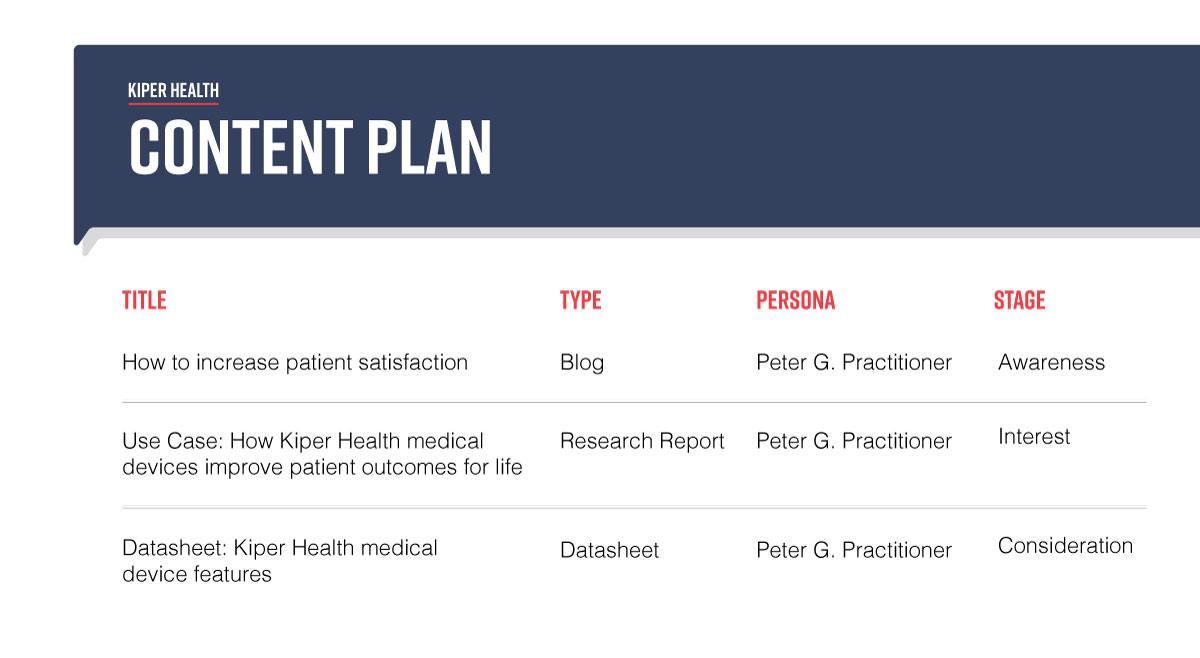Eighty percent are at or beyond capacity. Seventy-eight percent feel ‘burned out’1, and their attention spans are diminishing. How can you effectively market medical devices to one of the busiest, most stressful professions in the United States?
Common sense screams that marketers should go directly after the consumer, skipping the middle-man entirely. After all, the internet has made medical research available to all, allowing people to feel good about their healthcare decisions.
However, there are some issues. Doctors still hold the power of insurance, trust, and prediction. Depending on the type of product you sell, failing to market your medical devices to doctors creates a giant opportunity cost.
Also, despite the stress, doctors are most likely to feel that patient relationships are the most satisfying part of their job.1 Likewise, patients are very likely to be satisfied with their doctor.2 This attraction towards the personal side of healthcare indicates something very important – healthcare is about relationships, not just innovation.
We believe the “relationship” between medical device companies and doctors is built on thoughtful digital marketing. We’ve outlined 5 key steps for effectively marketing medical devices to doctors below.
-
Ensure you have the tools to succeed
At a bare minimum, you need to ensure you have:
- An email delivery and marketing automation system. Here at Penrod, we love Pardot for B2B communication.
- Research about your target market.
- A social media presence.
- A customer relationship management tool to manage customers from quote to close.
-
Create buyer personas
Buyer personas are a snapshot of your ideal customer. They help you identify the spectrum of people you’re selling to, and specify how to sell to each one. They typically include general demographics, motivators, frustrations, goals, and key influences.
The first step is researching your target market. Depending on what you look at, you can gain both historical and predictive insights. For historical, take a look at who has bought from you in the past and compile the demographics – age, clinic type, clinic size, and specialties.
For the predictive, take a look at who your competitors are selling to and comb through your website metrics. Use a keyword research tool like Answer the Public to figure out what people are looking for on search engines.
The key (and biggest hurdle) to creating an effective persona is to think of your potential buyer as a real person with pains, needs, and wants. Utilizing a template like the one below helps you market medical devices consistently.

-
Create a content plan
Now it’s time to put the personas you developed to use.
On the surface, it may make sense for you to lead with a product-focused message. While product marketing is an important aspect of every go-to-market strategy, try putting yourself in your persona’s shoes and ask the following question: “What would they like to read about, will it motivate them, and how does it alleviate their frustrations?”
In terms of new business, the answer is often not information specifically about your product. Rather, in the awareness stage, it’s information that helps your persona do their job at a higher level. As a guideline, ensure your content is GREAT:

Awareness takes patience. Once aware, your target persona may show signs of interest in your product. At this point, the product-focused marketing can begin.
The summarized content plan below has categories for title, type, persona, and stage. Try to have content that uniquely addresses:
- The needs of each persona you developed
- Every stage of the sales cycle (awareness, interest, consideration, conversion)
- A diverse amount of content types (blogs, videos, use cases, white papers, and datasheets)

-
Choose the right digital channels for marketing medical devices
Now that you have content, you’ll need to figure out the best place to promote it.
Fortunately, the future is healthy for digital promotion in the medical device space. According to a study conducted by healthcare research company Manhattan Research, 80% of physicians use the internet for professional reasons, and 50% of those who don’t see traditional sales representatives are still interested in digital promotional programs.3
An obvious choice is email, but don’t become over-reliant on it. Email marketing is becoming oversaturated, often feels impersonal, and will only get harder as privacy regulations become more restrictive on unsolicited communication. For the programs it makes sense, ensure your emails are personalized for each persona, and comply with CAN-SPAM or the stricter laws of your area.
Professional online networks are a great place to promote content.
- For targeted advertising, LinkedIn Ad Solutions lets you target your key personas at incredibly granular levels.
- LinkedIn Sales Navigator lets you take a more personal approach through inMail. You can also set up alerts about key events at your target accounts. This way, you can contact them at precisely the right time.
- WebMD’s Medscape, essentially a WebMD for medical professionals, is an outstanding way to meet doctors in the tools they use.
-
Ensure you have a platform to handle demand from quote to close
Once prospects enter your sales cycle, you need to ensure that you have a customer relationship management (CRM) system to handle the demand.
Here are the top things you need to consider:
- Your quoting system needs to scale with you and your customers
- Make sure your quoting system allows volume discounts to be applied in real-time
- Ensure the system provides discounting oversight in the quoting process
- Be sure the system identifies cross-sell opportunities, like bundled disposables
- Ensure that the system can be configured to consider GPO and IDN compliance


